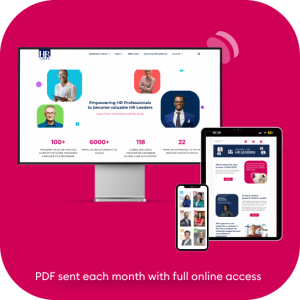The work environment in New York is changing at such a rapid rate, and the importance of mental wellness cannot be overstated. Bad mental health is detrimental to both the organization and the employees personally.
According to a report by the World Health Organization, it is estimated that mental health issues cost one trillion dollars annually to the world economy through lost productivity. This staggering figure highlights the need for businesses to prioritize mental wellness in their workplace strategies.
There comes the role of HR. They play a vital role in supporting an environment so that an employee can grow better in both personal and professional life. By using effective methods and implementing strategies efficiently, HR can help cultivate a mental wellness culture.
So, in this article, let’s understand how they can do so pragmatically! Dive in!
Understanding Mental Wellness
Mental wellness refers to emotional, psychological, and social well-being. It influences how we think, feel, and act. The National Institute of Mental Health study indicates that nearly 1 in 5 adults in the U.S. live with a mental illness. This truth makes it imperative for workplaces to care for the mental health of their employees.
A workplace that values mental wellness can lead to:
- Increased employee satisfaction,
- Better performance, and
- Reduced absenteeism.
In fact, a report from the American Psychological Association states that workplaces that promote mental wellness can see a return of $4 for every $1 spent on such initiatives.
The Role of HR in Promoting Mental Wellness
HRs are exceptionally positioned to conduct mental wellness initiatives for the employees. For this purpose, they may formulate programs and policies.
They can implement those policies in various strategized ways. Below are some of the prominent plans they can use to improve the mental well-being of the employees.
A) By Developing Mental Wellness Programs
These are some of the programs which engage the employees in the organization. These can ultimately help improve the mental well-being of the manpower.
1. Employee Assistance Programs (EAPs)
EAPs are essential tools for promoting mental wellness. These programs provide employees with access to professional counseling and support services. They are so effective that several surveys indicate that most employees who used EAP services reported improved productivity and morale. EAPs can help employees navigate personal and work-related challenges.
The HRs can implement these programs effectively. They should ensure that employees are aware of these programs and encourage them to use the programs.
2. Mental Wellness Workshops and Training
Workshops and training sessions focused on mental wellness can equip employees with the skills. Those are related to managing stress and building resilience. Even many employees believe mental health training would help reduce stigma in the workplace.
HR can organize workshops on topics such as:
- Stress management,
- Mindfulness, and
- Emotional intelligence, etc.
These sessions can create a supportive environment where employees feel empowered to take charge of their mental health.
B) Providing Useful Resources to Them
Access to resources is essential for promoting mental wellness. HR can curate a range of resources, including informational articles, therapies, self-help guides, and links to online support communities. Plus, they can suggest some better practices for the employees to implement. In turn, these resources can empower employees to take control of their mental health. Have a look at the following practices:
1. Suggesting Therapists
The HRs can suggest reputable therapists in New York to employees who want to address stress, anxiety, depression, or any sort of trauma.
Therapists use different techniques to help individuals relieve their stress or anxiety. CBT, or cognitive behavioral therapy, is among the most used methods. The experts suggest cognitive behavioral therapy exercises to individuals to help them handle their stress and feel relaxed.
By doing this, the HRs can help their employees understand and manage their mental health effectively.
2. Online Communities
Furthermore, online communities can offer support and a sense of belonging. Employees can connect with others who share similar experiences. This connection can help:
- Reducing the feelings of isolation and
- Encourage open conversations about mental health,
- Fostering a supportive workplace environment, etc.
HRs can strategically use these communities to help the employees. They can create a list of the communities nearby and then suggest them to the workforce.
C) Training Managers in Mental Health Awareness
Training managers in mental health awareness is a vital component of an effective mental wellness strategy. Managers are often the first point of contact for employees in every situation. Be it related to the work problem or whether they’re experiencing any challenges.
According to a study by Deloitte, 94% of employees feel that their manager plays a key role in their overall wellness. Hence, the manager must understand their duty. However, showing them the right direction is the obligation of HRs.
So, to implement these steps effectively, HRs can teach them some ways, such as:
1. Recognizing Signs of Mental Health Issues
Managers should be trained to identify common signs of mental health struggles in their team members. This includes understanding changes in behavior, such as increased absenteeism, decreased productivity, withdrawal from team activities, or noticeable changes in mood. By being aware of these signs, managers can approach employees with empathy and encourage them to seek support.
2. Creating a Supportive Environment
Training should focus on equipping managers with strategies to enhance a mentally healthy workplace. This includes promoting open communication and encouraging regular check-ins with team members. This will create a culture where employees feel safe discussing mental health without fear of judgment. Managers should also be trained on available resources to guide employees toward appropriate support.
3. Encouraging Self-Care Practices
Training should also emphasize the importance of self-care for both managers and employees. Managers should be equipped with tools and techniques to model healthy self-care behaviors, such as taking breaks, setting boundaries, and managing stress effectively.
By prioritizing their well-being, managers can set a positive example for their teams. Additionally, it encourages managers to discuss self-care strategies with their employees. This will highlight the importance of maintaining a work-life balance. This proactive approach fosters a supportive culture and empowers employees to take ownership of their mental health.
HR should also provide training on recognizing signs of mental distress and how to approach sensitive conversations. This training can empower managers to support their teams effectively.
D) Fostering Open Communication
Creating a culture of open communication is essential for promoting mental wellness. When employees feel comfortable discussing their mental health, they are more likely to seek help when needed. The HRs can streamline the whole process of communication by using strategies in the following ways:
1. Create Feedback Channels
Establish multiple channels for feedback, such as suggestion boxes, anonymous surveys, or digital platforms. Providing various options allows employees to choose the method they feel most comfortable with, encouraging them to voice their thoughts. Regularly review and act on feedback to show employees that their opinions matter and contribute to positive change.
2. Promote Active Listening
Train leaders and managers in active listening techniques. Encourage them to listen attentively to employees’ concerns and validate their feelings. This practice builds trust and makes employees feel heard. Consider using role-playing scenarios in training sessions to help managers develop these skills in real-life situations.
3. Implement Open-Door Policies
Encourage an open-door policy where employees feel comfortable approaching management with their concerns, ideas, or feedback at any time. This accessibility fosters a culture of openness and helps break down barriers between staff and management. Additionally, regular one-on-one check-ins between employees and their managers should be promoted to facilitate ongoing dialogue and relationship building.
4. Host Team-Building Activities
Organize team-building events and informal gatherings to strengthen relationships among team members. Activities like group outings, workshops, or team lunches can help create a supportive environment where employees feel more comfortable communicating.
By cultivating a workplace culture centered around open communication, organizations can significantly enhance employees’ mental well-being. And create an environment where everyone feels valued and heard. This, in turn, leads to increased engagement, productivity, and overall job satisfaction.
Measuring the Impact of Mental Wellness Initiatives
Effectively implementing strategies isn’t enough; HRs also keep track of their impact on employees. It can help in:
- Regular assessment of mental wellness programs is crucial for understanding their effectiveness. If they’re not effective enough, HR might replace them with some better strategies.
- It helps identify areas for improvement and ensures resources are being utilized effectively.
HR can establish KPIs to measure the success of mental wellness initiatives, such as:
- Employee satisfaction scores,
- Rates of absenteeism and turnover,
- Utilization rates of EAPs and wellness programs,
- Engagement levels in training sessions and workshops.
Feedback Mechanisms
HRs also encourage the employees to provide feedback. With the help of it, they take corrective actions if required.
- Collect feedback from employees through surveys and focus groups.
- This information can provide valuable insights into what is working and what needs adjustment.
To Wrap It Up …
Building a supportive workplace requires a commitment to mental wellness. HR plays a crucial role in implementing strategies that prioritize employees’ mental health.
Investing in mental wellness not only enhances employee well-being but also drives organizational success. The return on investment is clear: healthier, happier employees lead to a more productive and engaged workforce.
Guest writer.

































































